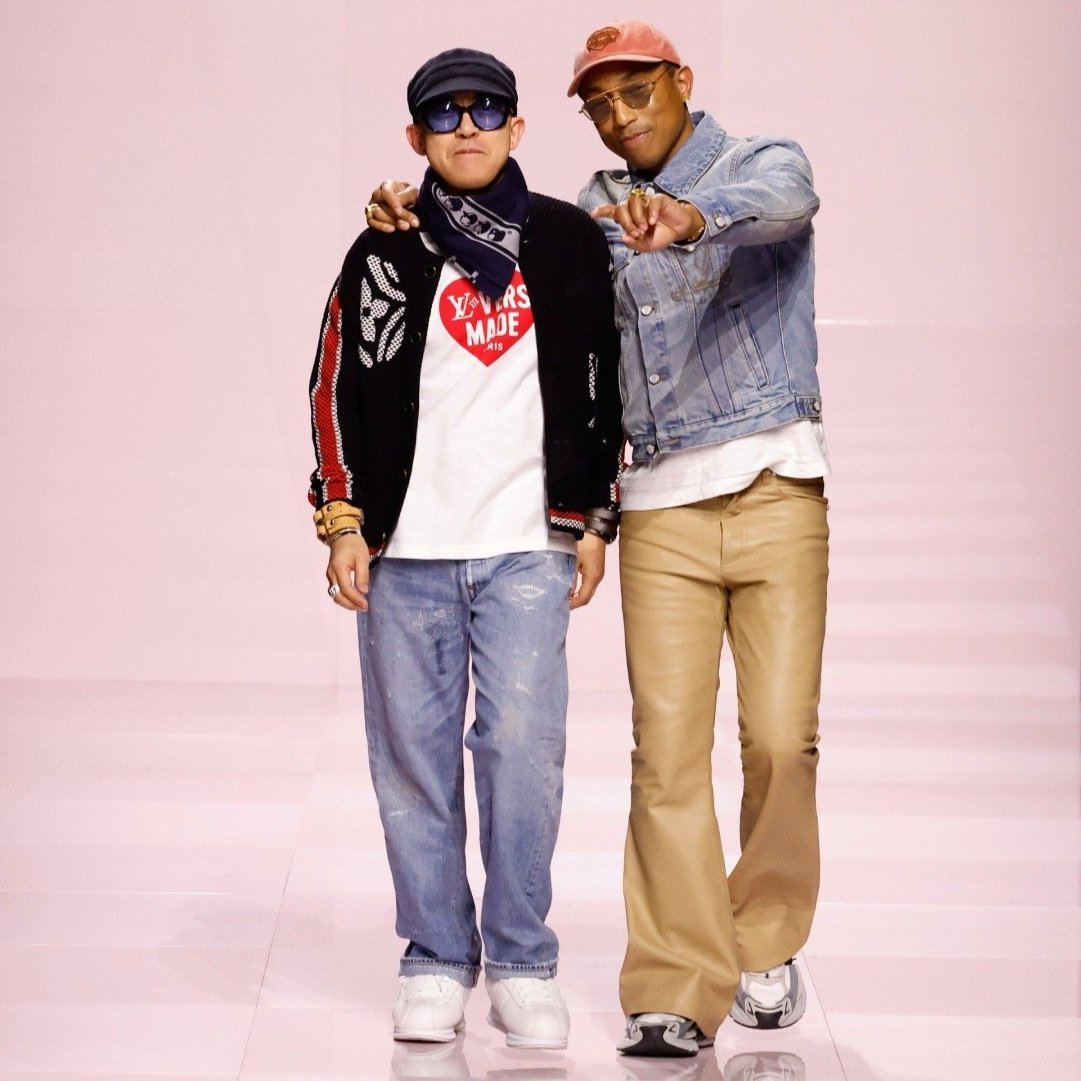Marc Jacobs takes Tokyo, Palace x Death Note and Tanaka’s FW25
A pop-up store, a streetwear/anime drop and a brand new collection
Fashion Flash Week 7
Palace x Death Note
The House of Marc Jacobs
The acclaimed designer and his already signature long nails take over Tokyo with a pop-up experience that aims to reminisce and highlight his trajectory from his remembered years at the tenure of Louis Vuitton to his work on his namesake brand, all through the different collaborations and the deep bond he's established with Japan throughout the years. Located at Isetan Shinjuku and open until February 18th, having a physical location to dive into these diverse projects all at once really makes clear the importance and impact the Asian country has had in Jacob's life, ever since his first big moment alongside it in 2003, when the historical collaboration between Louis Vuitton and Takashi Murakami was born and that precisely some months ago saw its very successful revival.
Finding a way to always leave an impact in the culture with every new idea and project, in 2012, his collaboration, also at LV with Yayoi Kusama, kept his tradition and goal of honouring the work of artists whose work he deeply admired while at the same time producing items and products that have a significant weight in the fashion industry up until this day. From an appearance on the 2010 cover of Numéro Tokyo, dressing Hatsune Miku in 2014 for her animated opera performance, establishing a close supportive bond with Japanese designer Tomo Koizumi, and collaborating with photojournalist Kyoichi Tsuzuki in 2019 to capture MJ collectors in Japan, it is clear his love for Japan is reciprocated by it, and this pop-up store is only making the sentiment grow deeper and fonder.
Palace x Death Note
Just in time for Valentine's Day, instead of giving roses to somebody else, you can give yourself a blue oversized shirt with Ryuk’s face printed on it. Romantic? I don't know, but Palace's new drop featuring the very familiar faces of the cult manga is out, and as with every other streetwear brand-manga/anime collaboration, it becomes a very commented, very hyped and very sold phenomenon. This time, the masterwork of Tsugumi Ohba and Takeshi Obata is reimagined in pieces and silhouettes that follow the ones we are used to from Palace and that are presented in different versions and designs.
From the most evident prints of iconic scenes—like Misa Amane with the Shinigami eyes, Ryuk eating his beloved apple, or L having his thumb in his mouth for whatever reason—stamped on the front of T-shirts or on the back of hoodies, the most attractive pieces are undoubtedly the ones that defy a bit more what we are used to seeing from this type of collaboration. The denim two-piece set, where both the jacket and the pants feature an all-black image of Ryuk that covers almost the totality of the garment, probably made with some sort of screen printing technique, fulfills the task of professing your love for anime while looking cool at the same time. The blue and white shirts featuring big pictures of Ryuk and Misa in full colour are also attractive, and the complements, like caps and bags, are conceived to be sold out in just a second. The collection will be available online worldwide and at Palace physical stores in the UK, NY, LA, Japan and Korea.
Tanaka F/W 2025
The Japanese brand led by Sayori Tanaka and Akira Kuboshita presented its new collection under the name Side A. Always being loyal to their motto "Clothing that weaves together the past 100 years and the next 100 years; clothes that will be loved for a long time, regardless of era or gender," the brand took the hopeless reality we are living in, gave it a twist and reimagined it in a much more positive way, envisioning a world without war; the Side A of the cruel reality lived in the Side B. Tanaka took a very simple but significant element, the nylon twill often used in the construction and creation of military garments, and gave new life to it, thinking about all the different ways that it could be used if making gear for war was not its primary use.
Out of this and combining different techniques and processes that reflect the brand's commitment to always innovate and give a twist to what's already established, the twill was woven into tweed in Bishu, using traditional Japanese weaving techniques and featured in different deconstructed silhouettes that contain hints of what could be military wear but never reaches its full form but blends it with other pieces and aesthetics that soften, contain and purify them. Always loyal to portraying the savoir-faire behind Japanese ancient knowledge of textiles and its manipulation, the collection also features Nishijin textiles, Kiryu’s hand-stitched embroidery or spray finishes by Okayama denim craftsmen.
The last look features dozens of paper cranes attached to a denim shirt, symbolising the ones left by visitors at the Hiroshima Peace Memorial Museum. "Let all the souls here rest in peace, for we shall not repeat the evil." With the reflection that military clothes are not made to hurt others but rather to protect oneself, just like how we do every single day of our lives by just wearing our usual garments, Tanaka managed to slowly transform a negative connotation into a positive one with every look on the runway and every piece shown, and that is a genuine demonstration of the power of fashion and the power of clothes.












